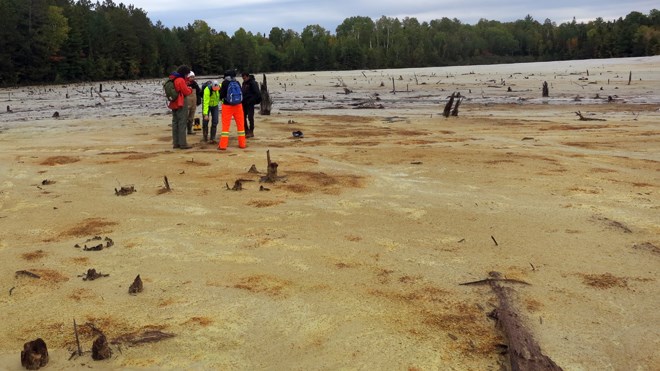By John Gunn
Abandoned mine sites represent problems we are all too familiar with when dealing with "common rooms" and “shared kitchens” – "Who is going to clean up this mess?” and “Who is going to pay for the damages?"
Public lands have the same problem when people dump trash in the bush to avoid paying landfill fees. However cleaning up industrial "brown fields", like the mercury-laden sediments of an abandoned industry that caused such suffering for an Indigenous community on the English Wabigoon River near Dryden, is a far bigger problem than litter.
In the mining sector alone, there are more than 5,000 abandoned sites where the taxpayer is on the hook for the cleanup, ecosystem repairs and dealing with the downstream community miseries.
Kam Kotia's mine site rehabilitation effort in Timmins is probably the largest of these efforts in Ontario (with about $75 million spent to date), but the vast majority of the “nasty surprises” have not been dealt with, including an abandoned gold mine site (above photo) south of Sudbury, where arsenic is steadily seeping into Long Lake, forcing several adjacent residents to use bottled water.
This mine was closed in 1939 after extracting $63 million of gold (in today's dollars), but 100 years later, taxpayers are stuck with millions of dollars in cleanup costs (not yet started). Fortunately, modern mining companies are under much more stringent regulations, so we hope not to inherit too many more such sites.
Sharing the global atmosphere as a dumping ground for CO2, methane and other greenhouse gases dwarfs the challenges presented by abandoned mine sites, but is the same issue (tragedy of the commons).
This time, it is hard to know who the culprits are when it comes to the effects of climate change: Who trashed the air we breathe? Or who triggered the extreme climate events we suffer? Who is responsible for increases in asthma, bronchitis, heat stress, flood damage, and insurance costs. It is even harder to find who to blame when the smog and damages to the atmosphere are caused by wildfires, or other so-called “natural processes” (thawing permafrost, greater decomposition during warm extended summers).
However, lately it seems that we are finally starting to connect the dots, and beginning to accept that humans caused these problems and now we need to pay the bill (Note: 2018 will probably be one of the most expensive wildfire years ever).
Well, who should pay? Clearly if we can identify the culprits (illegal dumpers, polluting companies, inefficient users of fossil fuels), they should pay first (polluter pays). But as citizens who already are familiar with covering the costs of shared services (hospitals, highways, schools, etc.), and know the wisdom of investing in our own our future (e.g. home and auto insurance, RSPs, etc.) the answer is obvious.
Is there a silver lining? For instance, when you clean up a common room after a party, you might actually find change beneath the cushions or be able to cash in the leftover beer bottles.
Sometimes, there is actually lots of value in waste, if you are smart enough to harvest it. For example, the Greater Sudbury Utilities Innovation group is harvesting enough natural gas from the landfill site to heat 14,000 homes, and there are millions if not billions of dollars of left over valuable metals in tailing piles around Sudbury.
The economic benefits (i.e. green jobs) and health care cost savings from investments in “clean tech industry” can also be enormous as we move into the post-fossil fuel world. The alternatives are not pleasant.
Lately report after report has delivered the same message: time is short. We are at a “tipping point” and we cannot leave the common room in a mess much longer.
John Gunn is the director of the Vale Living With Lakes Centre at Laurentian University.
